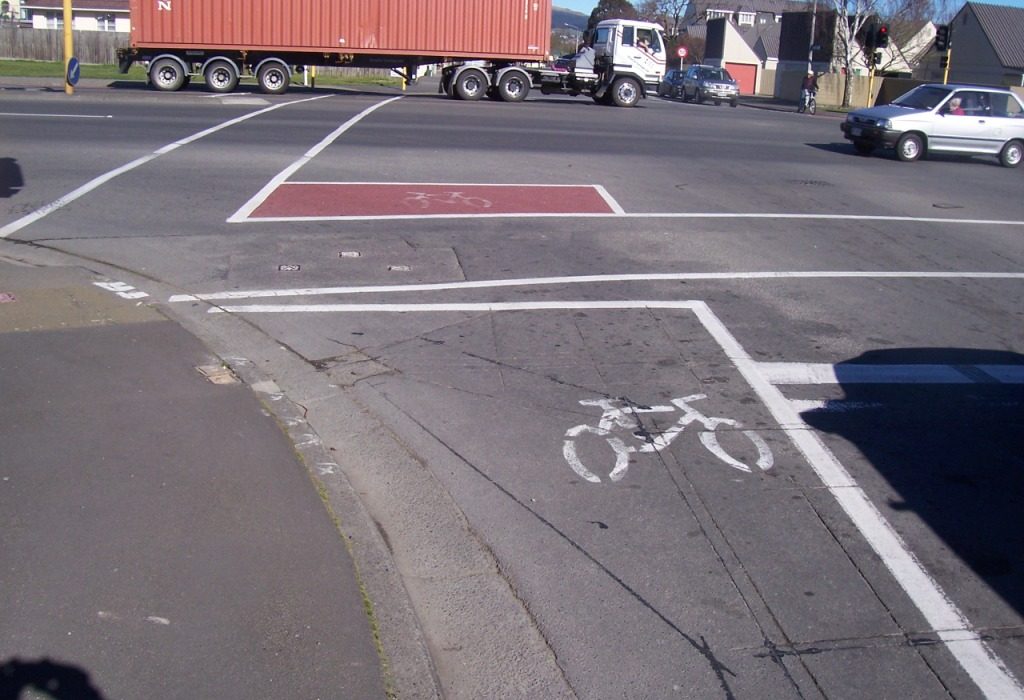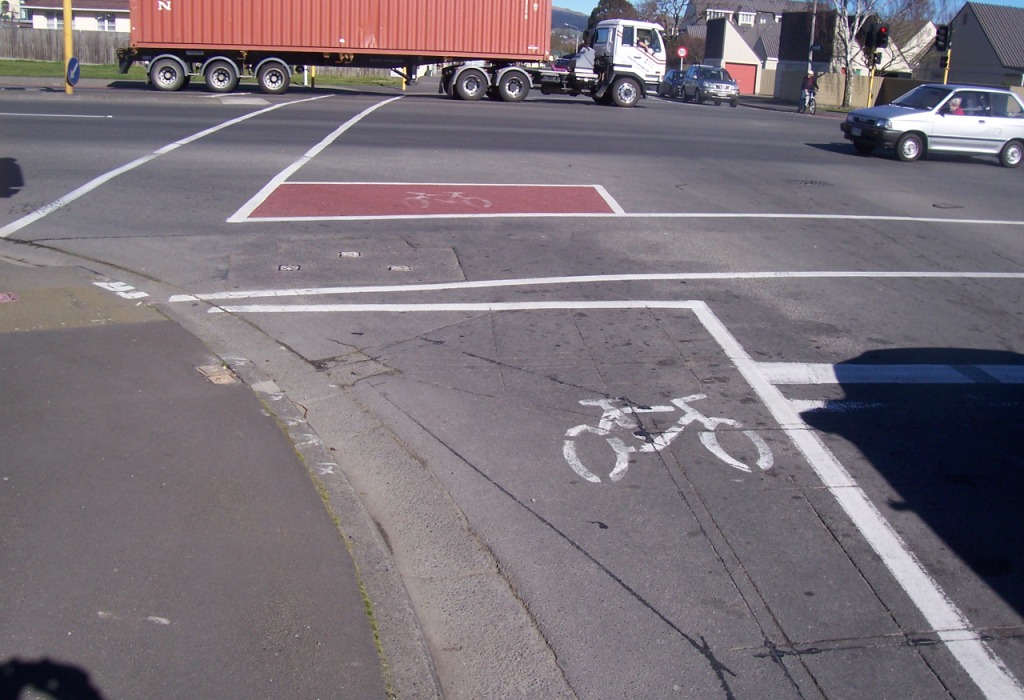Invariably on a bike you have to go through traffic signals somewhere, and if you’re the only one around then you hope they detect that you’re there. Many of the new cycle detectors around town are actually overhead camera ones instead these day, but here’s a reminder of some advice, first posted in March 2013, about how to get the attention you need from in-ground ones…
Sometimes it can be a bit tough when you’re on your treadly to get traffic signals to change for you, especially when no other vehicles are around. So it’s useful to know exactly how you can get things to work in your favour.
First a bit of background: Vehicles (cycles or otherwise) are detected at traffic signals by inductive wire “loops” placed just under the road surface; have a look closely next time at the (usually) rectangular shapes on the ground near the intersections. They’re not weight detectors (unlike some of the yellow pedestrian pads). Essentially they act like giant metal detectors, but of course the average bike has far less metal than a typical car.

Now you could just bump up the sensitivity of the loops so that a smaller amount of metal would be picked up; the problem is that a car in the next lane over might get detected too, which could be confusing for some traffic signals. So there’s a fine balancing act regarding the sensitivity of the detectors. The basic rule is: to improve your chances of being detected, ride along the detector lines in the road, rather than across them or between them.
Here in Christchurch, the City Council tries to help riders in a number of ways:

- Where there is a marked cycle lane leading up to an intersection, in most cases special smaller detectors are located within the cycle lane, specifically designed to be more sensitive and detect your presence.
- In some cases, a set of small white diamonds are painted on the road or path to indicate the best place for cyclists to ride their bike to get noticed by the detectors.
- At some cycle crossings, a red cycle logo by the hold rail lights up to let you know that you have been detected. Usually, stopping by the hold rail triggers this. Learn more about these clever crossings here.
What if you have a fancy carbon-fibre frame bike? (or maybe a bamboo frame) Chances are there is still a reasonable amount of metal in the remaining equipment for getting detected (e.g. wheels, chains); you could also try to lie the bike down closer to the ground to get more detection.
What if my bike is almost entirely made of plastic or cardboard? OK, I give up, you’ll probably have to go and press the pedestrian call-button if you want to get across. Fortunately, there are not many of these around yet!
If it seems that a traffic signal is just not picking you up, no matter where you plonk your bike, it could be a wiring fault or maybe it’s just not tuned correctly. Contact the Council’s City Streets Signals Section and give them the details – information about making maintenance requests.

And if you need a bit more guidance and inspiration, check out this amusing little instructional video from the US (note that we tend to use rectangular detectors in NZ):
(For more information about the theory behind detection of bicycles, see CAN’s ChainLinks “Cycling Research” article, June 2005)
Do you find it easy or hard to get noticed by traffic signals when on your bike?

